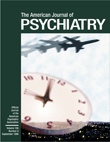This book is written by a psychologist and is “specifically geared toward the practitioner.” The author does not indicate which practitioner, but it is clearly not the psychiatrist. Many issues with which the psychiatrist must wrestle when treating the patient with ADHD are either overlooked or made short shrift of, such as the cardiac effects of tricyclics, the potential hepatotoxicity of pemoline, the appearance of tics during treatment with stimulant medications, and the nuances of dosing schedules of different medications. Triolo wants us to be “good consumers of research” (p. 18). Unfortunately, his naivete about the nitty-gritty of the psychiatric treatment of ADHD makes it possible for him to conclude that “some very bright patients have reached the same level of understanding as that of many experts in the field” (p. 158). In suggesting this he trivializes the complexities of the diagnosis and treatment of ADHD.
This book is divided into eight chapters: “Introduction,” “Theory,” “DSM-IV Criteria: A Critique for the Diagnosis of Adults,” “Clinical Diagnosis of ADHD,” “Case Studies,” “Psychotherapeutic Treatment of ADHD Adults,” “Pharmacotherapy,” and “Future Advancements.” There is an index. Biederman’s work is referred to only twice in passing, and his name is misspelled. In many of the book’s discussions, one gets the sense of having walked in on the middle of a conversation; however, the confusion does not clear because the discussion itself is confused. One example is when the author contends that “lack of symptoms during enjoyable activities may be a way to rule out ADHD” (p. 82) and then cites, a few pages later, an explanation for flawless achievement by an ADHD patient on a continuous performance task: “I actually like things like this…because I know what I am supposed to do and I am free not to concern myself with anything else” (p. 100). Additionally, the author dismisses all evidence for a neuropathological and/or neurophysiological origin of ADHD yet insists that ADHD is a “neurobiological disorder.”
The strongest part of the book is Triolo’s critique of several psychological tests. He concludes that there are only three standardized ADHD inventories worthy of use with adults: the Adult Attention Deficit Evaluation Scale, which is flawed by reliance on DSM-IV criteria; the Brown Attention-Deficit Disorder Scales, which are marred by insensitivity to impulsivity and hyperactivity (p. 91); and the author’s own Attention Deficit Scales for Adults. The author regards DSM-IV criteria as virtually useless for diagnosing adults because these criteria are based on children’s samples. For me, the most helpful part of the text is the examination of continuous performance tests such as the Test of Variables of Attention. He concludes, “Of all the neuropsychological instruments available, only continuous performance tests have been identified as having some diagnostic utility,” but he adds the caveat that “extreme caution is advised” in the use of these tests (p. 104).
There is the usual psychology propaganda against psychiatry: “It is extremely important to realize that ADHD does not lend itself to the medical model, which is very mechanical” (p. 209). The author is reluctant to tell patients that they have a “brain disorder” because this may have a negative impact on self-esteem, and thus he does not address the fact that medicine is the only intervention proven to have substantial effectiveness in the treatment of ADHD.
The diagnosis and treatment of ADHD throughout the life cycle lack standardization. A result is that nonpsychiatric physicians tend to poke at the disorder, undermedicating and operating on the outdated assumption that ADHD disappears after school, on weekends, and during school holidays. Many nonpsychiatric physicians attempt to treat ADHD without awareness of the potential for comorbid illness and the need for frequent and flexible follow-up appointments that last more than 3–5 minutes. With respect to the need for a thorough, thoughtful evaluation of ADHD patients, this book offers insight and support; however, it unfortunately contributes to the market-share-driven notion of the psychologist as expert in all things pertaining to ADHD, including the evaluation of comorbid disorders and the use of medications. The psychiatrist who is looking to learn about the actual treatment of ADHD or who has had experience with the disorder and wants help with some of its vexatious treatment problems will find this text too simplistic.

